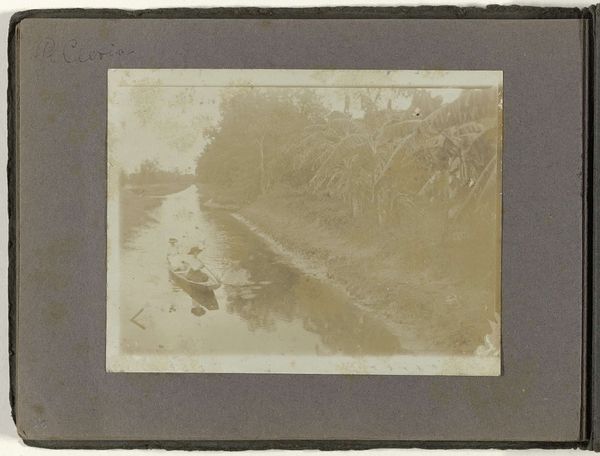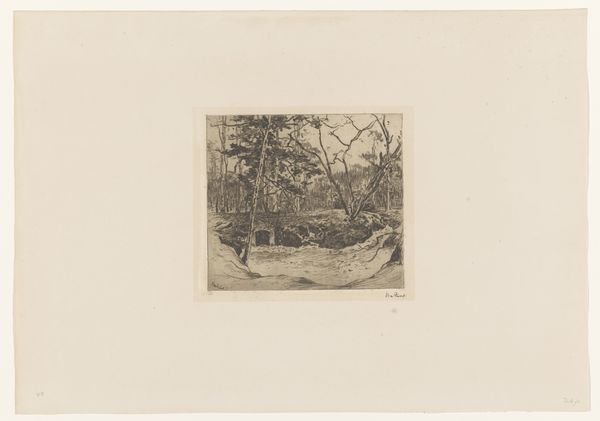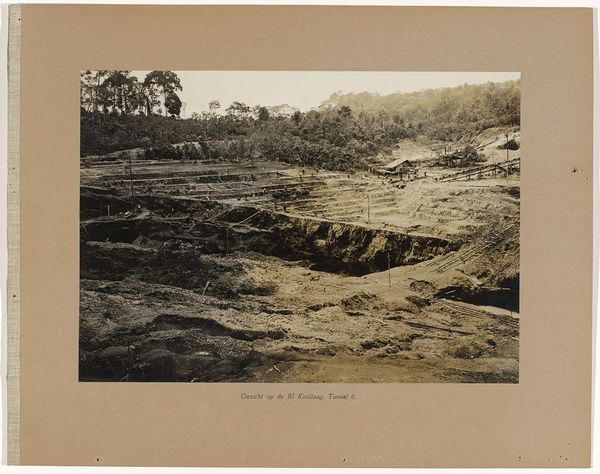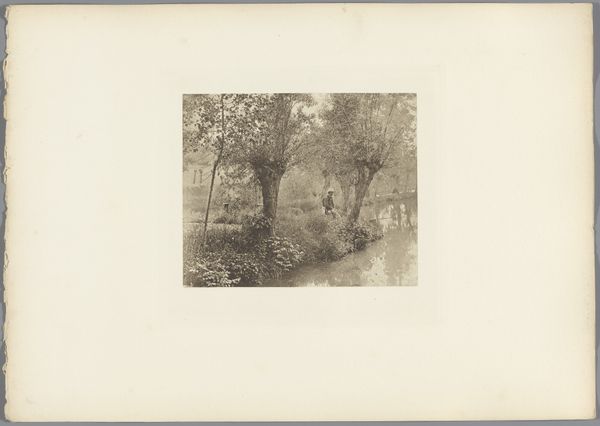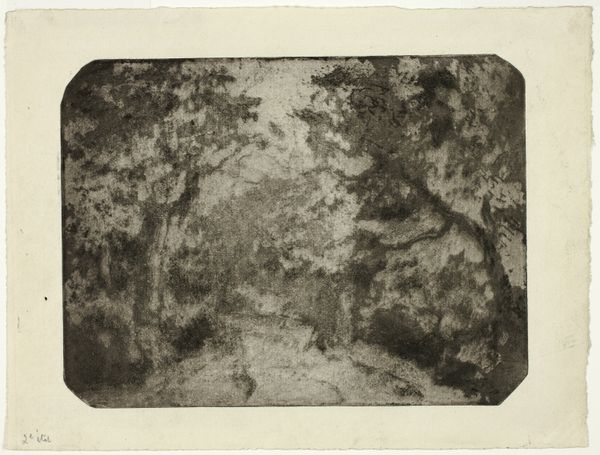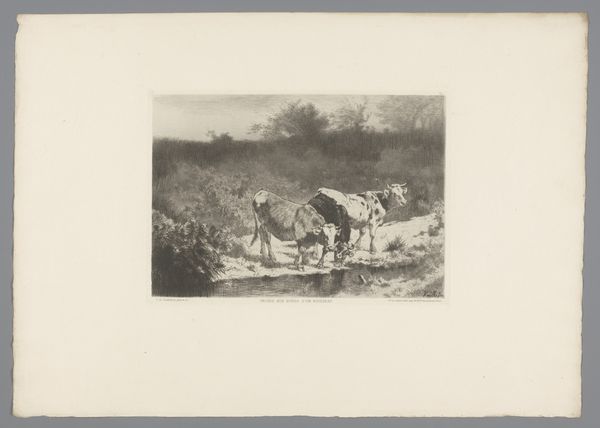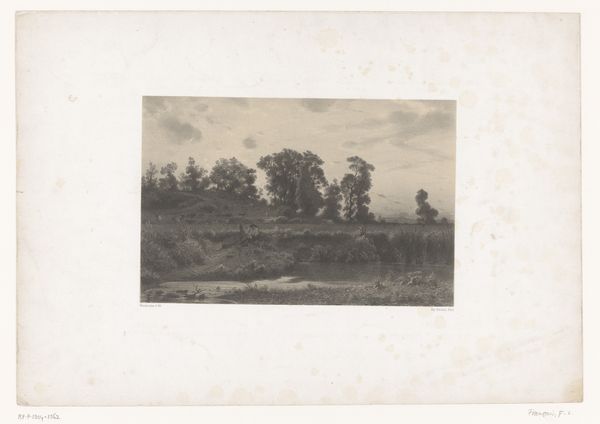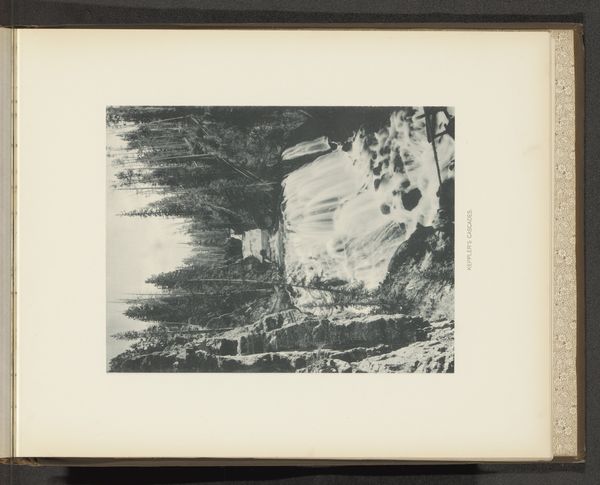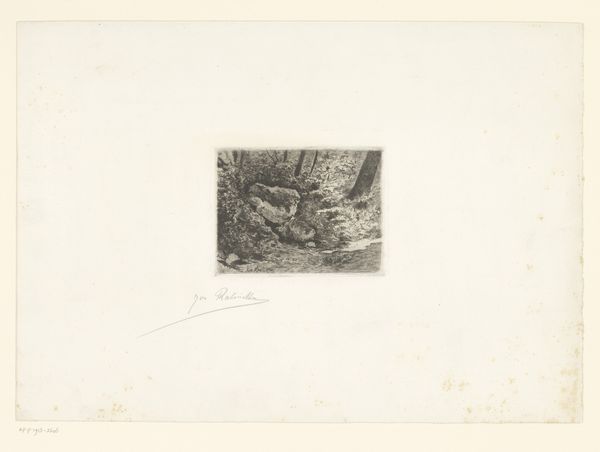
photography
#
pictorialism
#
landscape
#
photography
Dimensions: height 278 mm, width 392 mm
Copyright: Rijks Museum: Open Domain
Curator: This is "Waterval," a landscape photograph taken between 1921 and 1922, currently residing here at the Rijksmuseum. It's attributed to an anonymous artist. Editor: It possesses such an ethereal, otherworldly feel. The monochromatic tones and the flowing water create a sense of movement and dreaminess. Curator: Indeed. The photographic style seems to embrace pictorialism, a movement that emphasized artistic effect, mimicking painting through soft focus and tonal manipulation. Knowing that this was created in the early 20th century, we need to consider the social and political context, especially regarding landscape art and colonial exploration. Representations of nature were often tied to notions of claiming land and resources. Editor: That’s very perceptive. Viewing it through a post-colonial lens allows for an understanding of the photograph beyond its mere aesthetic qualities. Whose gaze is being privileged here? Does the inclusion of the figure on the embankment signify dominion, an act of claiming? Curator: The human figure is a key element in establishing the scale of the environment. Its relation to this environment is also revealing of larger power dynamics within colonial narratives. It implies presence, control, almost a kind of... ownership. And pictorialism itself was embraced by a certain class and used for specific ideologies. Editor: Absolutely. The soft focus and almost romantic representation of the waterfall obscure potential socio-political exploitation tied to the region itself. It veils labor, environmental concerns... Curator: The manipulation of the photograph through stylistic means does not merely render it as aesthetically pleasing; it frames the natural world, imbuing it with meanings aligned to the ideology of its time. I’m reminded that during this time photographs circulated in ways that established ideas of nationhood, progress, and “exoticism”. Editor: Thinking about its position in the Rijksmuseum collection also reveals much about institutional choices and biases inherent in shaping visual canons. By grappling with it now, it might force reflection and enable new interpretive possibilities. Curator: I agree. The photograph prompts critical dialogue about art’s relationship to socio-historical context, pushing us to challenge the inherent biases embedded in seemingly beautiful landscape photographs. Editor: Precisely. Viewing "Waterval" prompts an ongoing re-evaluation about pictorial strategies, political exploitation, and our responsibility in interrogating historical narratives as displayed by institutions.
Comments
No comments
Be the first to comment and join the conversation on the ultimate creative platform.

